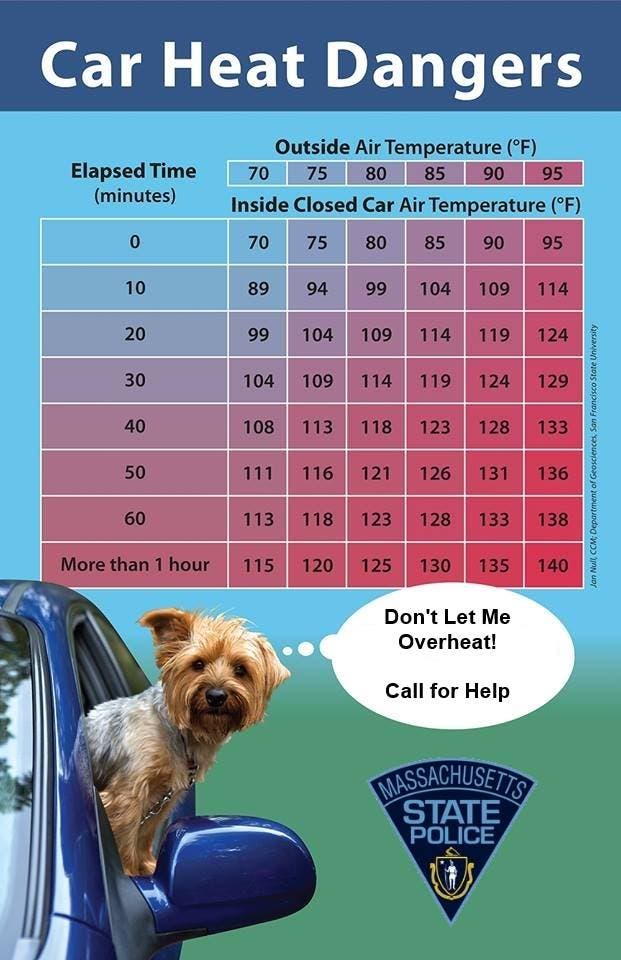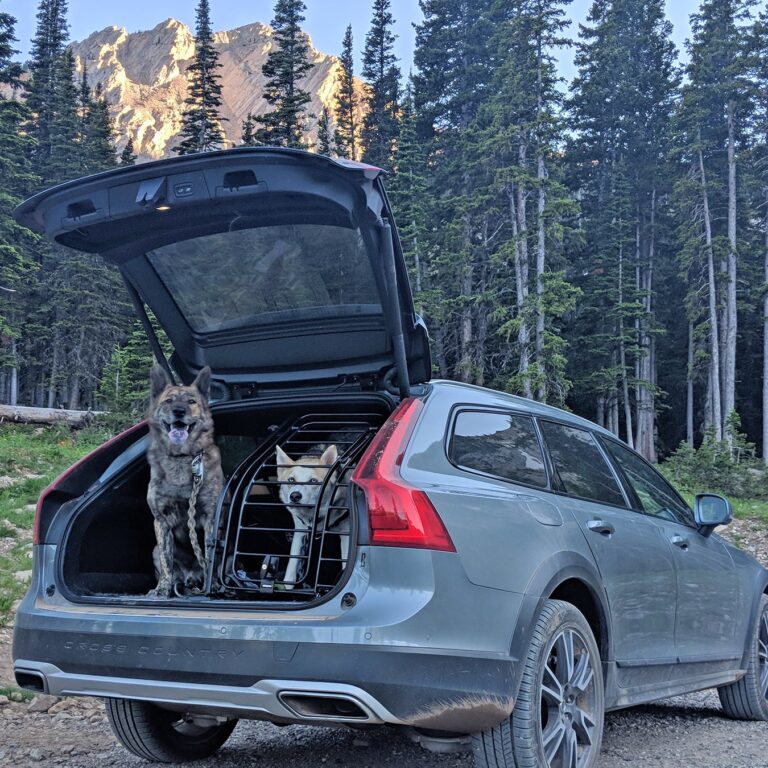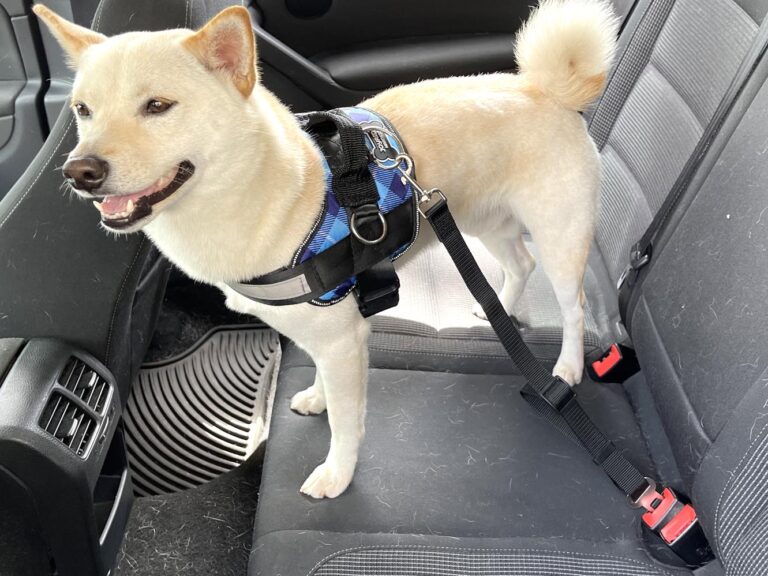Is It Ever Ok to Leave Your Dog in the Car?: The Truth Unveiled
It’s generally unsafe to leave your dog in the car. Even a few minutes can pose significant risks.
Leaving a dog in the car can be dangerous due to temperature fluctuations. On a hot day, the inside of a car can reach deadly temperatures quickly. Even with the windows cracked, dogs can suffer from heatstroke or even die.
Cold weather also poses risks, as it can cause hypothermia. Apart from temperature concerns, dogs left alone in cars can become anxious or stressed. They may also attract thieves or vandals. Always prioritize your pet’s safety by avoiding leaving them in the car. Consider alternatives like pet-friendly stores or leaving them at home.
Introduction To Canine Safety
Ensuring the safety of our beloved dogs is a top priority. One critical aspect of canine safety is understanding the risks associated with leaving dogs in vehicles. Many dog owners might not realize the potential dangers, leading to unintentional harm to their pets.
The Dangers Of Cars For Dogs
Leaving a dog in a car can be extremely dangerous, even for a few minutes. Cars can heat up quickly, reaching deadly temperatures within minutes. Even on a mild day, the interior of a car can become unbearably hot.
Here are some key points to consider:
- Heatstroke: Dogs can suffer from heatstroke if left in hot cars. Their body temperature can rise rapidly.
- Dehydration: Without water, dogs can become dehydrated very quickly, leading to severe health issues.
- Suffocation: In a closed car, oxygen levels can drop, causing breathing difficulties.
Common Misconceptions About Leaving Dogs In Vehicles
Many dog owners believe certain myths about leaving their pets in cars. These misconceptions can be dangerous and potentially life-threatening for dogs.
Here are some common misconceptions:
| Misconception | Reality |
|---|---|
| Leaving windows cracked is enough | Cracking windows does not significantly reduce temperature. |
| It’s safe if parked in the shade | Cars can still heat up even in the shade. |
| It’s safe during cooler weather | Even on cool days, cars can become dangerously hot. |
By understanding these dangers and misconceptions, dog owners can make informed decisions to protect their pets. Never leave your dog in a car, even for a short period.
The Temperature Factor
The Temperature Factor is one of the most critical considerations when deciding whether to leave your dog in the car. Dogs are highly susceptible to temperature changes, and even a short duration in a parked car can be dangerous.
How Cars Turn Into Ovens
Cars can heat up very quickly, turning into ovens within minutes. Even with the windows cracked, the temperature inside a vehicle can soar. This happens because cars are made of materials that absorb and retain heat.
When sunlight enters through the windows, it heats the interior surfaces. These surfaces, in turn, heat the air inside the car. The car’s enclosed nature traps this hot air, causing the temperature to rise rapidly.
Studies show that the temperature inside a car can increase by 20 degrees Fahrenheit within just 10 minutes. This rapid temperature rise can put your dog at serious risk.
The Rate Of Temperature Rise Inside A Parked Car
The rate at which the temperature rises inside a parked car can be alarming. Here is a table that shows how quickly the temperature can escalate:
| Time Elapsed | Temperature Increase |
|---|---|
| 10 minutes | +20°F |
| 20 minutes | +30°F |
| 30 minutes | +40°F |
| 60 minutes | +50°F |
As you can see, the temperature inside a parked car can become dangerously high within a short period. The risk is even greater on hot days or in direct sunlight. Your dog can suffer from heatstroke, which can be fatal.
To keep your dog safe, it’s best to avoid leaving them in the car. Even a quick errand can turn into a life-threatening situation for your furry friend.
Health Risks For Dogs In Parked Cars
Leaving your dog in a parked car can be extremely dangerous. Even if the weather feels mild, the temperature inside a car can rise quickly. This can lead to severe health risks for your furry friend. Let’s explore some of the main health risks.
Heatstroke And Its Consequences
Dogs can suffer from heatstroke within minutes in a hot car. Heatstroke occurs when a dog’s body temperature rises above normal levels. This can lead to severe organ damage. Symptoms of heatstroke include:
- Panting heavily
- Drooling excessively
- Showing signs of confusion or agitation
- Vomiting or diarrhea
- Collapse or unconsciousness
Heatstroke can cause permanent damage to a dog’s organs, including the heart and brain. In extreme cases, it can be fatal.
Dehydration And Respiratory Distress
Dehydration is another serious issue for dogs left in parked cars. Without access to water, dogs can become dehydrated quickly. Dehydration can lead to symptoms such as:
- Dry nose and gums
- Sunken eyes
- Loss of skin elasticity
- Lethargy or weakness
In addition, the high temperatures inside a car can cause respiratory distress. Dogs may struggle to breathe, which can exacerbate other health problems. Signs of respiratory distress include:
- Rapid breathing
- Open-mouth breathing
- Blue or pale gums
- Excessive panting
Both dehydration and respiratory distress can lead to life-threatening conditions if not addressed promptly.
| Health Risk | Symptoms | Consequences |
|---|---|---|
| Heatstroke | Panting, drooling, confusion, vomiting | Organ damage, fatality |
| Dehydration | Dry nose, sunken eyes, lethargy | Weakness, serious health decline |
| Respiratory Distress | Rapid breathing, blue gums, panting | Breathing difficulties, potential fatality |
It’s crucial to understand these risks. Always prioritize your dog’s health and safety.
Legal Implications
Leaving your dog in the car can have serious legal consequences. Many states have strict laws about this issue. Understanding these laws can help you avoid hefty fines or even jail time.
State Laws And Penalties
Each state has its own laws about leaving pets in cars. Some states have very strict rules, while others are more lenient. Here are some examples:
| State | Penalty |
|---|---|
| California | Up to $500 fine and/or six months in jail |
| Florida | Fine up to $500 |
| New York | Fine up to $200 |
| Texas | Class A misdemeanor |
In some states, penalties increase if the pet suffers harm. This makes it crucial to understand your local laws.
The Good Samaritan Law Explained
Many states have a Good Samaritan Law to protect those who rescue pets from hot cars. These laws vary by state, but generally, they offer legal protection to anyone who helps an animal in distress.
- Steps to follow:
- Check if the car is locked.
- Call local authorities.
- Wait for their instructions.
- If the pet is in immediate danger, break the window carefully.
Always document the situation with photos or videos. This can help if there are any legal questions later.
Knowing the laws can save you and your pet from a dangerous situation. Always think twice before leaving your dog in the car.
Safe Alternatives To Leaving Dogs In Cars
Leaving your dog in the car can be dangerous, especially during extreme weather. Dogs can suffer from heatstroke or hypothermia in a short time. Luckily, there are many safe alternatives to ensure your pet’s safety and comfort.
Planning Ahead For Dog-friendly Destinations
Many places welcome dogs. Dog-friendly parks, cafes, and stores make great options. Research dog-friendly spots in your area before heading out. This way, you can bring your furry friend along without worry.
Here are some tips for planning ahead:
- Check online for dog-friendly businesses.
- Call ahead to confirm pet policies.
- Plan breaks at pet-friendly rest areas during long trips.
Innovative Gadgets And Solutions For Pet Owners
Technology can help keep your dog safe. Innovative gadgets can make a big difference. Here are some examples:
| Gadget | Description |
|---|---|
| Portable Fans | Keep the air circulating in your car. |
| Cooling Mats | Provide a cool surface for your dog to lie on. |
| Pet Temperature Monitors | Alert you if the car gets too hot or cold. |
These gadgets ensure your dog stays comfortable. Investing in these tools can make traveling with your pet easier and safer.
Remember, your dog’s safety is your responsibility. Plan ahead and use innovative solutions to keep your furry friend safe and happy.
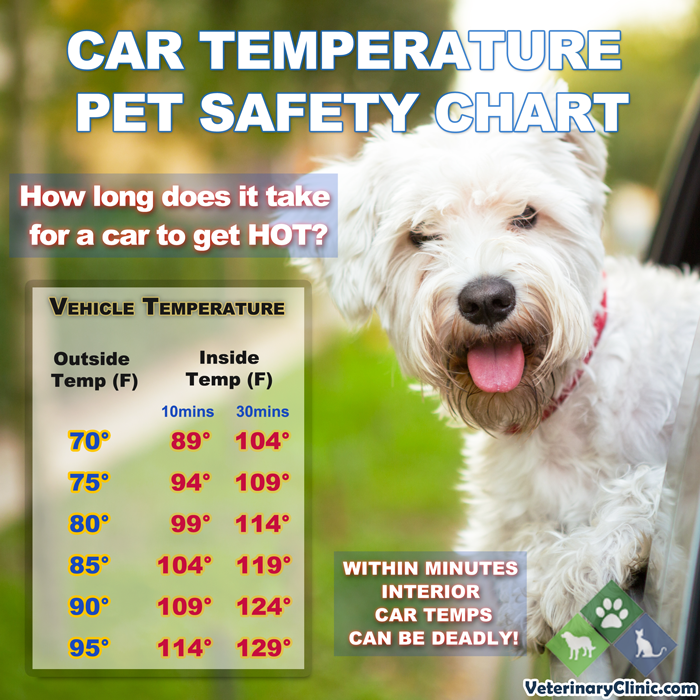
Credit: www.cambridgema.gov
Emergency Actions And First Aid
Leaving a dog in a car can quickly turn dangerous. Knowing what to do in an emergency can save your pet’s life. This section covers immediate actions and first aid steps you can take if you find a dog in distress inside a car.
Recognizing Distress Signals In Dogs
Dogs can show various signs of distress in a hot car. It’s essential to recognize these signals early. Look for the following symptoms:
- Heavy panting
- Excessive drooling
- Weakness or lethargy
- Vomiting
- Rapid heart rate
- Unconsciousness
If you notice any of these signs, the dog is likely in severe distress. Immediate action is necessary.
Immediate Steps To Take If A Dog Is In Danger
If you see a dog in a hot car, take these steps immediately:
- Assess the situation. Check if the dog is showing distress signals.
- Find the owner. Look for nearby people who might be the owner.
- Call for help. Contact local authorities or animal control.
- Provide first aid. If you can safely remove the dog, offer water and move to a cooler place.
Never hesitate to take action. Every second counts.
Here is a quick reference table for first aid steps:
| Action | Details |
|---|---|
| Move to Shade | Find a cool area immediately. |
| Provide Water | Offer small amounts of water. |
| Cool with Wet Cloths | Use wet cloths on paws and neck. |
| Monitor | Watch for any changes in condition. |
By following these steps, you can help save a dog’s life.
Educating The Public
Leaving a dog in a car can be dangerous. Many people still do not know the risks. Educating the public is crucial. This section will explore how to spread this important message.
Awareness Campaigns And Their Impact
Awareness campaigns play a vital role. They inform the public about the dangers of leaving dogs in cars. These campaigns use various methods to reach people.
- Social Media: Platforms like Facebook, Instagram, and Twitter are effective.
- Public Service Announcements: These can be broadcasted on TV and radio.
- Posters and Flyers: Distribute them in public places like parks and vet clinics.
These methods can reach a large audience quickly. Effective campaigns can change behavior. People become more aware and act responsibly.
How To Spread The Word Responsibly
Spreading the word about not leaving dogs in cars must be done responsibly. Here are some tips:
- Use Accurate Information: Ensure the data shared is correct and reliable.
- Be Compassionate: Avoid shaming people. Educate them kindly.
- Engage the Community: Involve local groups and organizations in spreading the message.
These steps can help create a more informed and caring community. Everyone can contribute to keeping dogs safe.
Personal Stories And Case Studies
Understanding the real impact of leaving a dog in a car can be better understood through personal stories and case studies. These narratives provide insight into the potential dangers and emotional toll on both pets and their owners.
Testimonies From Pet Owners
Many pet owners have shared their experiences about leaving their dogs in cars. Some stories end in relief, while others are tragic.
- John from California: “I left Max in the car for just 10 minutes. When I returned, he was panting heavily. I had to rush him to the vet.”
- Sarah from Texas: “I thought it was safe because it was cloudy. But Daisy suffered from heat exhaustion. It was a terrifying experience.”
These testimonies highlight the unpredictability of leaving dogs in cars. Even short durations can be risky.
Analysis Of Close Calls And Tragedies
Many cases have shown that even a few minutes in a car can lead to severe consequences. Close calls often serve as wake-up calls for pet owners.
| Case | Duration | Outcome |
|---|---|---|
| Max in California | 10 minutes | Rushed to vet, recovered |
| Daisy in Texas | 15 minutes | Heat exhaustion, recovery |
| Spot in Florida | 5 minutes | Passed away |
Tragic stories like Spot’s in Florida emphasize the potential fatal outcomes. Even five minutes can be too long in certain conditions.
Learning from these stories and case studies can help prevent similar incidents. Always consider your dog’s safety first.
Conclusion: Best Practices For Dog Safety
Ensuring your dog’s safety is essential. It’s crucial to follow the best practices to keep your furry friend safe, especially in situations involving vehicles. Below, we provide key takeaways and highlight the importance of responsible pet ownership.
Summarizing Key Takeaways
- Never leave your dog in a car alone. Cars can heat up quickly, even on mild days.
- Plan ahead. If you need to run errands, consider the weather and your dog’s needs.
- Use pet-friendly services. Many places offer pet-sitting or dog-friendly areas.
Commitment To Responsible Pet Ownership
Being a responsible pet owner means making the best choices for your dog’s safety and well-being.
- Always prioritize your dog’s safety. Never compromise on their well-being.
- Educate yourself. Stay informed about pet safety guidelines and tips.
- Be prepared. Carry essentials like water, food, and a leash for your dog.
| Best Practice | Reason |
|---|---|
| Never leave them in the car | Heatstroke and suffocation risks |
| Plan your trips | Ensure your dog is comfortable and safe |
| Use pet-friendly options | Convenience and safety for your pet |
Remember, your dog relies on you for their safety. Make informed decisions and keep their best interests at heart.

Credit: www.cleveland.com
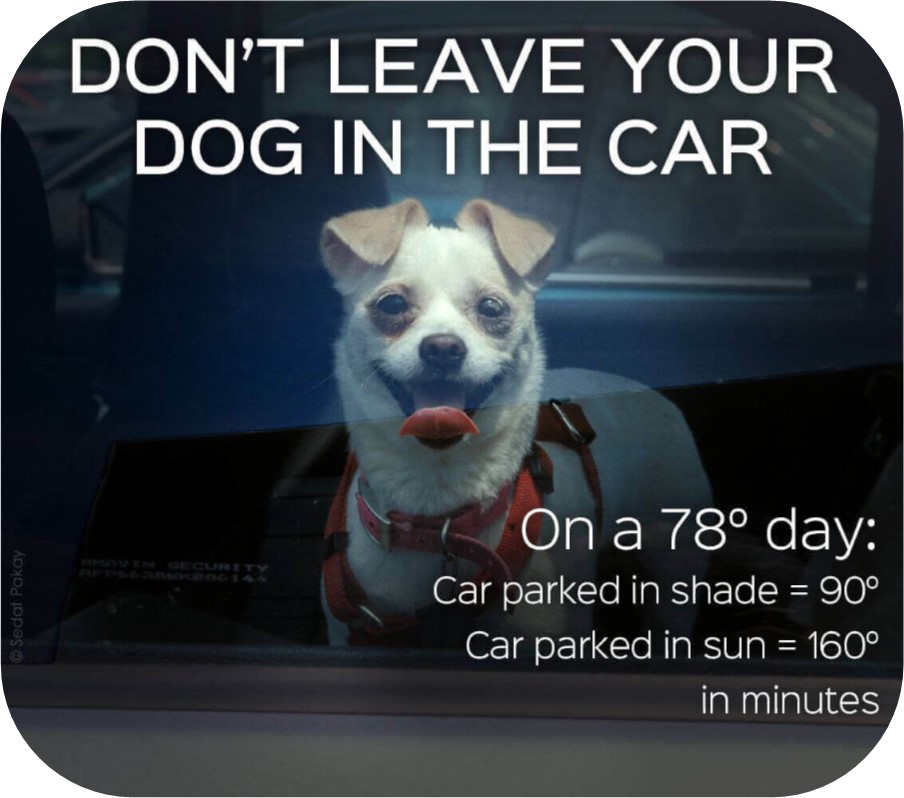
Credit: olddoghaven.org
Frequently Asked Questions
How Long Can You Leave Your Dog In The Car?
Never leave your dog in a car unattended. Temperatures can rise quickly, causing heatstroke or death. Always prioritize their safety.
Will My Dog Be Ok In The Car?
Your dog can be OK in the car if you ensure proper ventilation and frequent breaks. Never leave your dog alone in a hot car. Secure them with a harness or pet carrier for safety. Always bring water and keep an eye on their comfort.
Why Not Leave A Dog In The Car?
Leaving a dog in the car can lead to heatstroke or suffocation. Temperatures rise quickly, causing severe harm.
Is It Okay To Leave Your Dog In The Car On A Cold Day?
No, it’s not safe to leave your dog in the car on a cold day. Temperatures can drop quickly. Your dog can suffer from hypothermia or other health issues. Always ensure your pet is in a safe, warm environment.
Conclusion
Leaving your dog in the car can be risky. Temperatures can rise quickly, endangering your pet’s life. Always prioritize your dog’s safety and well-being. Consider alternatives, like leaving them at home or finding a pet-friendly location. Your dog’s health and happiness depend on your responsible choices.
Be a caring and attentive pet owner.
- Can I Get in a Taxi Without a Car Seat? - January 26, 2025
- Can I Get Chlamydia From a Toilet Seat? - January 26, 2025
- Can I Get an Uber With a Car Seat? - January 26, 2025

